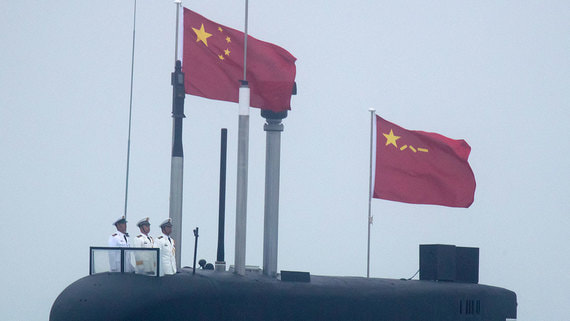China may commission a silent submarine by 2030
[ad_1]

China may build a new generation of Type 096 nuclear-powered ballistic missile submarine (SSBN) before the end of the 2020s. According to an August report from the China Institute of Naval Studies at the US Naval War College, which was highlighted by Reuters on October 9, a distinctive feature compared to previous Chinese submarines will be noiselessness. As a result, it will become much more difficult for Americans to monitor the movements of new Chinese submarines. The report itself also notes that in addition to Type 096 submarines, the Chinese continue to develop new Type 095 multipurpose nuclear submarines (the lead submarine was laid down back in 2008).
One of the report’s authors, retired American submariner Christopher Carlson, opined that “the Type 096 would be a nightmare” as they would be “very, very difficult to detect.” Judging by satellite images from November 2022 of the new shipyard in Huludao, China, production of hull sections of the new submarine is likely on schedule, with the Type 096 submarines due to enter service by 2030. Experts say this is a leap in China’s capabilities will have serious consequences for the United States and its allies in the Asia-Pacific region, since China may as a result gain an advantage over the submarines of the countries of the AUKUS bloc (USA, Britain, Australia).
The report says “innovative imitation” of foreign technology could help China achieve breakthroughs in water jet propulsion and noise suppression systems. The question of how exactly China managed to obtain information about foreign developments remains open – the Ministry of Defense did not answer Reuters questions.
Carlson does not believe that China received access to modern technologies from Moscow. But the Chinese can create a Type 096 submarine so secretive that it will actually resemble the Russian “Improved Sharks” (according to the NATO classification, this is the name for the modified multi-purpose nuclear submarines of Project 971 “Pike-B”). The report states that in most characteristics (propulsion systems, sensors, weapons), Type 096 submarines will be comparable to the Russian Project 955 Yuri Dolgoruky SSBN. It is alleged that the new submarines will have similar dimensions to the Shchuka-B. Most likely, submarines of type 095 and 096 will be double-hulled, but there is no exact data on this.
The Chinese Navy is currently conducting patrols using relatively noisy Jin-class 094 submarines from Hainan Island in the South China Sea. They are armed with the most advanced third-generation submarine-launched intercontinental ballistic missiles, the JL-3, with a range of more than 10,000 km and can reach the United States.
There is no evidence that anyone could transfer to China some of the technologies used in Project 096, says Vasily Kashin, director of the Center for Comprehensive European and International Studies at the Higher School of Economics. The Chinese could collect a certain critical amount of data from open sources and through intelligence channels, and then conduct developments on this basis themselves, he believes. At the same time, the expert recalls that, speaking of multi-purpose submarines, it is worth remembering that while the Chinese continue to build the latest multi-purpose nuclear submarines of Project 093B “Shan”.
Calling Moscow a source of competence in nuclear submarine shipbuilding is a long-standing tradition in the West, but in reality this is a part of military-technical cooperation where its role is not so great, says Ilya Kramnik, a researcher at IMEMO RAS. Russia does not seek to share its developments in this segment and cooperation here is less active than in surface shipbuilding, the expert adds. Cooperation between the Soviet Union, and then Russia and China in the submarine fleet was much more intense on diesel-electric submarines, as was the case with Project 636 Varshavyanka.
In the field of nuclear submarines, China is developing independently, but not entirely without Russian influence, since Chinese students study in Russia in large numbers and gain general knowledge in a variety of fields – from shipbuilding to nuclear reactor technology, Kramnik says. The general progress in the industry and the increased competencies of Chinese specialists, which were adopted, including in Russia, led them to the opportunity to create modern submarines, he believes.
[ad_2]
Source link








